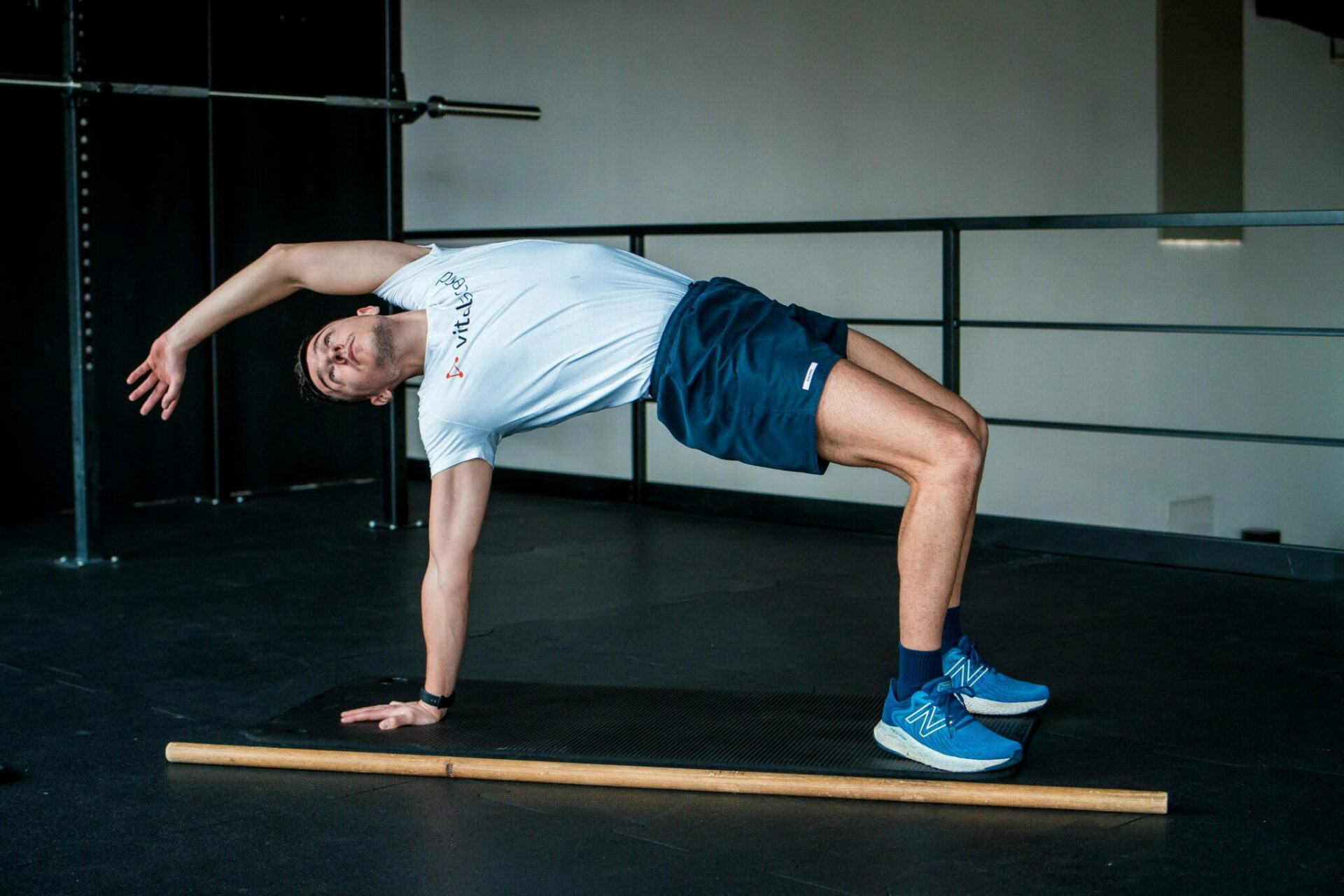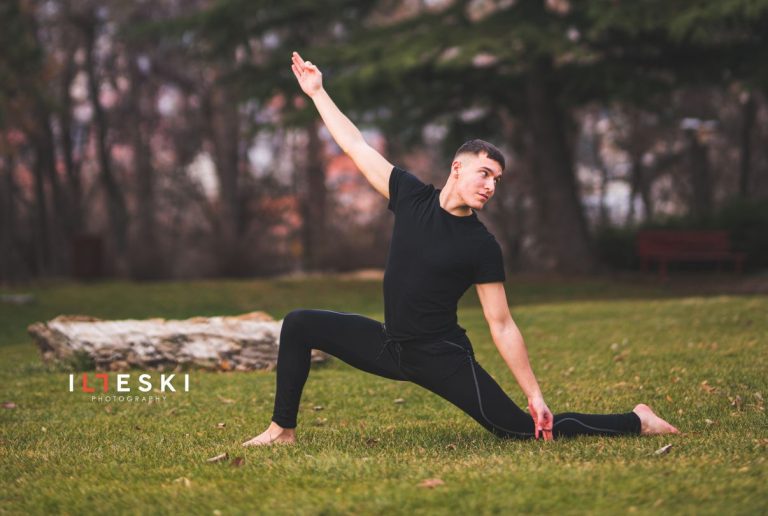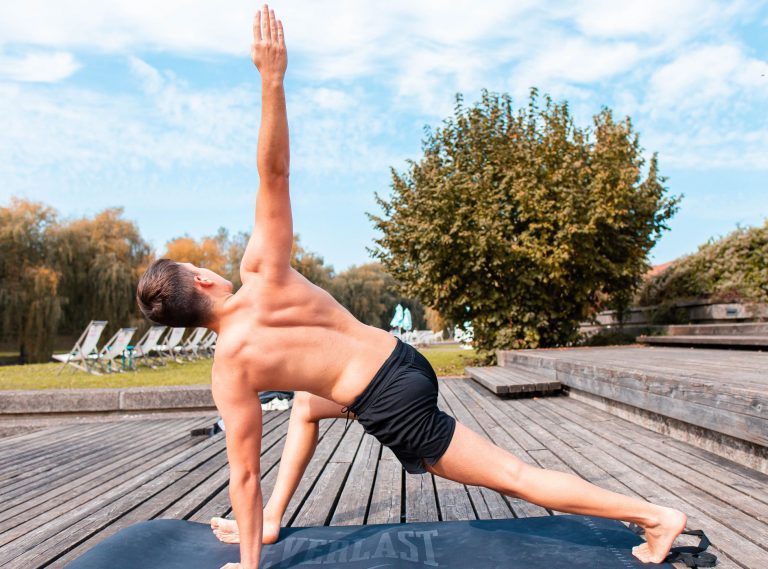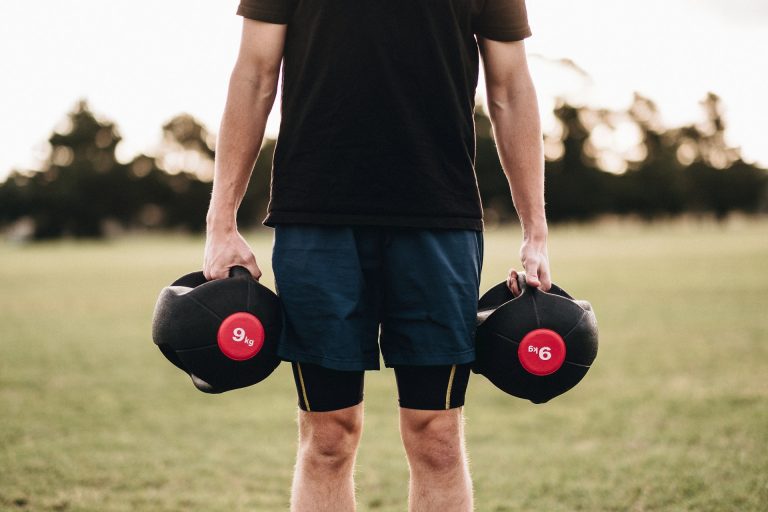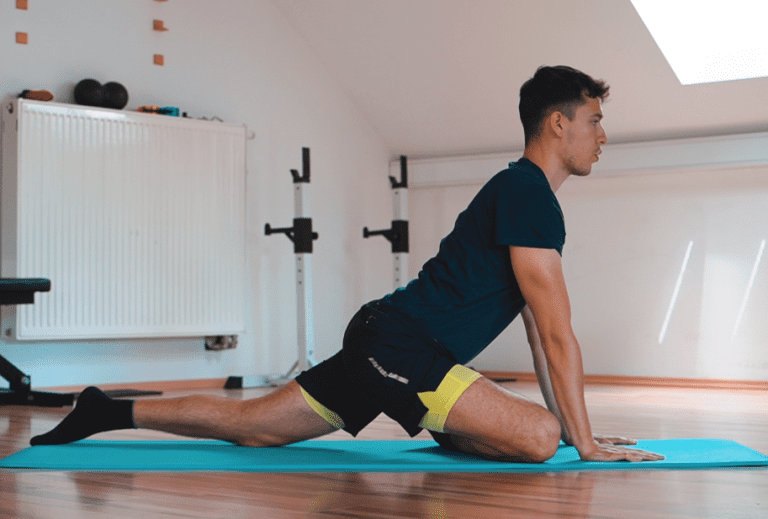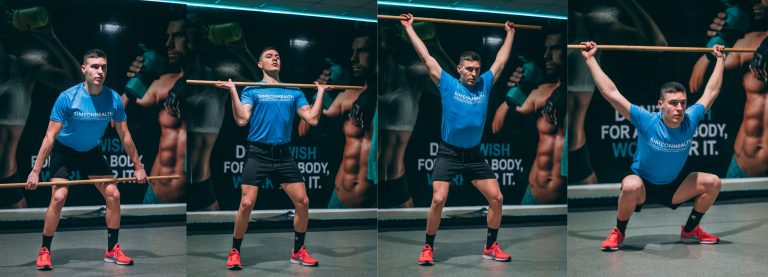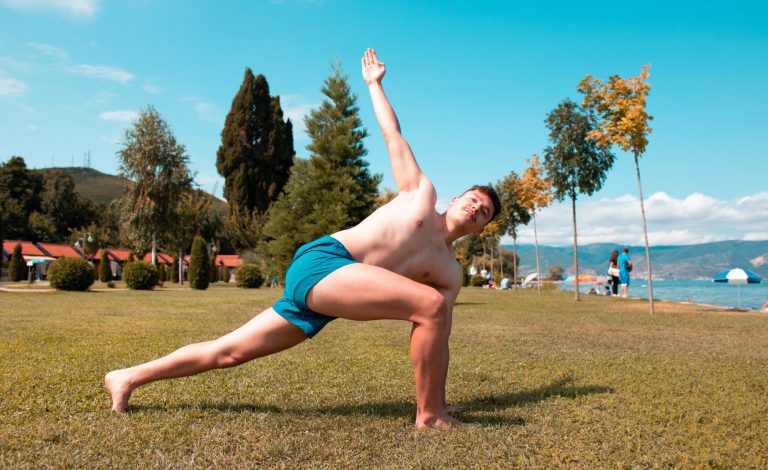Top 9 Full Body Mobility Exercises
To improve mobility and become fluid in your movement, you should move more. We’re talking squatting, pressing, running, jumping, throwing, etc. For someone who sits a lot, it’s most likely they experience low back and shoulder tightness. This is a full-body mobility protocol to unlock movement in your body, release tightness and become limitless.
Frequent movement makes connective tissues adapt, not one session. Stretching makes you more flexible, lifting makes you stronger, and dynamic compound movements make you more mobile. From improved athletic performance and more energy to better sleep and no tightness, mobility does it all.
The Most Effective Way of Training Mobility
So the question is what’s the most effective way to increase mobility? Or better yet, what’s a practical full-body mobility solution that gives me the best bang for my buck? We want to be mobile, but it has been 3 years since our last yoga session, so what can we do?
Well, incorporating a 20-minute full-body mobility routine, whether pre-workout or when you find a window of free time, it’s your call. This can get your blood flowing, it’ll stretch and loosen up some muscles, unlock the full range of motion in your joints as well as strengthen key muscles to correct posture.
pro tip
If time is of the essence and we look for the best return on investment, full body mobility, twice weekly for 20 minutes is probably the best way to go.
Top 9 Full Body Mobility Exercises
This session consists of compound or complex multi-joint exercises involving rotation, hinging, squatting, etc. The point is to open up your body, move in a full range of motion and loosen tight tissues. The three parts this mobility protocol focuses on are hip mobility, shoulder mobility, and thoracic mobility.
Three key areas which shape this protocol are:
- dynamic exercises made to warm you up, increase blood flow and viscoelasticity
- slow and controlled movements to increase body awareness and proprioception
- deep stretches and rotations to help you loosen up tight tissues and access a full ROM
Dosing: Each exercise has a number of repetitions to be done for. Do 2 cycles of each, meaning you repeat the exercises from 1-9 in the given sequence, then repeat the cycle 2nd time. It should take around 20 minutes.
When to do mobility training?
Mobility training is best done as a warm-up, pre-workout. It can also be a separate training for recovery days, where you don’t engage in any intense activity. If you’re an office worker with a sedentary job, taking active breaks in-between to do some stretching and mobility can be great.
Is mobility the same as flexibility?
Flexibility and mobility are not the same things. Flexibility is the length of your muscles, whereas mobility is your capacity to move your joints through their full range of motion. For the maintenance of healthy movement patterns, flexibility and mobility are both crucial.
How to improve mobility and flexibility?
You can perform activities that use the full range of motion in the joints. To increase both mobility and flexibility, some methods include stretching, foam rolling, and mobility drills. The most common and effective exercises are overhead raises, deep squats, spiderman lunge twists, and thoracic rotations.
1. Bear Plank to Downward Dog
The bear plank to downward dog exercise combines two movements that help improve the mobility of your hips, lower back, and shoulder.
- begin in a bear plank position hands below shoulders knees bent at 90 degrees.
- keep your spine straight, as you want to prevent overarching of the lower back.
- on your inhale push back into a downward dog position
- extend through the shoulders fully, and push back as far as comfortable
- on your exhale, slowly lower your hips back into bear
- squeeze your abdominals and stabilize through the shoulders.
Alternating between the plank and downward dog positions can help you warm up quicker. That’s why it’s the first exercise. It works on shoulder stabilization while involving a large core musculature at the same time. Also, it stretches out the lower back, hip muscles, and calves.
Dosing: Do 10 slow transitions, focus on your breathing, and hold for 1-2 seconds per position.
2. 90-90 Hip Transfers
The 90-90 hip transfer exercise is quite a simple yet very effective hip mobility exercise. It stretches a very specific set of muscles around the hip, from both the inner and outer sides.
- get seated with your legs bent at a 90-degree angle
- one legs knee is pointed forward, and the other on to the side
- slowly lean toward your front leg forward
- deep breath in and hold the stretch for 5 seconds
- after that slowly lift your knees to transfer them to the opposite side
- repeat the same on the other side, lean forward
This isn’t just a hip stretch. The transfer itself helps warm up a lot of structures around the hips, helping them glide through smoothly. This can further increase your range of motion in your hips and help you squat deeper.
Dosing: Do 5 Transitions, so 5 stretches on each side, held for around 5 seconds with deep breathing.
3. 1-Arm Reverse Plank Bridge Reach
The unilateral reverse plank bridge sounds quite like a complex exercise. It helps you open up the chest and the lateral portion of your torso while stretching out different muscles in the back. It adds a shoulder stabilization component and is quite dynamic in nature.
- start in a reverse plank position, but get seated on the floor
- position your right arm behind your back as a support
- slowly on your exhale, lift the hips, lifting your left hand overhead and look toward it
- stabilize and push through the right shoulder for full extension
- on your inhale lower back down and repeat it again.
The reverse plank bridge reach exercise is dynamic by nature, meaning it’ll help you warm up different structures around both your shoulders and hips. It adds strength to your hips, stability in your shoulders, and stretches out the lateral portion of your trunk.
Dosing: Do 5 slow repetitions on each side, holding the movement at the end for 2 seconds.
4. Spiderman Lunge Twist
The Spiderman Lunge Twist is a great hip and torso mobility exercise as it stretches the hip muscles while opening up the thoracic spine. It’s one of the most common warm-up, full-body mobility exercises incorporated pre-training.
- step up with your right foot forward in a lunge position
- hinge down slowly to place your left hand next to your right foot
- on your inhale (twist) rotate up with your right hand, extending overhead toward the ceiling
- on your exhale slowly lower back to touch the ground with the right hand
- repeat opening on your inhale, closing on your exhale
The Spiderman Lunge Twist is a very versatile exercise, stretching out a very large portion of muscles from your lower back and hip flexors to all the upper leg muscles on the lateral portion, such as the glutes. It’s definitely a go-to for hip mobility, groin flexibility, and warming up.
Dosing: Do 10 slow repetitions on each side, holding for 2 seconds at the end position. Sync your breath at a 2:2 sec. inhale-to-exhale ratio.
5. Deep Squat Reach
Although a bit advanced, there is no better way to improve hip mobility than squatting very deep. An easier alternative will be just squatting without the twist, having a 2-inch platform to raise your heels on. It’s a great warm-up as it activates large muscles in the legs while adding the twist adds to spinal mobility.
- standing up, position your fit hips width apart or a bit wider
- slowly start descending down by lowering your hips
- push your knees in the direction of your toes and go in a deep squat
- go only as low as you can keep full feet on the floor (no heel lift) and knees in the direction of your toes (not inward)
- if you already feel a stretch hold the squat for five seconds, then get back up.
The more advanced level adds a twist *not for everyone
- To additionally add a spinal twist, place one arm on the inner portion of your knee
- twist your torso by raising the other arm toward the ceiling
- slowly on your exhale, lower down into a deep squat and switch on the other side
The deep squat is one of the best exercises for people who sit too much. It can release tight glutes, lower back, hip abductors, and adductors. It can strengthen the glutes, providing hip stability which aids in the prevention of low back pain. This helps us with postural alignment and movement fluidity.
Dosing: If you only do the deep squats, do 10 reps with 5-second holds at the lower end. If you’re doing the twist, do 3 deep squats each with 2 torso rotations at each side holding for 1 second.
6. Overhead Arm Circles w/ Band
Normally, a stick is used for the overhead and back rotations, but we’d rather do it with an elastic band for safety. During the dynamic sequence, the goal is to mobilize the shoulder joint while stretching the chest and front delts. It opens the chest area while warming and lubricating the shoulder.
No pushing or pulling if our shoulders don’t allow it; or else, an injury might occur. Here, proprioception is crucial. To avoid any popping, we carefully rotate backward while paying attention to engaging the important muscles. The easier it is, the wider the grip. We narrow our grip as we progress, but never to an uncomfortably narrow level – always within a range of motion that we can perform with complete control.
- grip an elastic band wide apart (the wider, the easier)
- standing straight, keep your pelvis tucked and slowly raise your arms overhead
- once at vertical, slowly stretch out the band, rotate your shoulder internally
- finish the circle by extending the hands behind your back (only if comfortable)
- once down, depress (lower) the scapulae
- externally rotate the shoulders and repeat back by lifting the band (slowly)
- finish the circle overhead so your arms come forward
Dosing: Do 8 slow and controlled repetitions, really focusing on comfort and muscle engagement.
7. Prone Arm Circles
Your shoulder flexibility and strength will be put to the test during the prone arm circles. It involves passing a tennis ball while moving your arms back and forth in a circular pattern while lying on your stomach. It combines shoulder stability and mobility while targeting back erectors, important muscles for postural alignment.
- lie down on your stomach, tuck your chin, and tuck your pelvis in, feet on the floor
- grab a tennis ball, extend your arms overhead, lifted off the ground, palms face down
- slowly move your arms back in the horizontal plane, while rotating your shoulders internally
- reach your arms back (over glutes) so in the rear position they face up toward the ceiling
- pass the ball to the other hand
- slowly move back extending the arms back to an overhead position
- slow down and focus on activating the muscles to make the movement smoother
Because of its ability to integrate rotation with ab(d)uction, it allows the shoulder to move through its full range of motion. Also, it stretches the front delts and strengthens the deep neck flexors, all of which are beneficial for posture.
Dosing: Do 8 slow and controlled reps, 4 reps pass right to left hand, then 4 reps on the other side.
8. T-Spine Wall Rotation
The T-spine wall rotation helps open up the thoracic spine by laterally rotating the torso. It stretches out lateral torso muscles and aids in thoracic mobility. It can open up all the frontal muscles like the chest and shoulders, which keep you in a tight and slouched position.
- lunge next to a wall, right leg forward, rear leg (L) back, knee on the floor
- extend both hands up front, right stays in touch with the wall
- open your torso by rotation on the other side
- keep contact with the wall on your right hand and knee
- once you enter the full range, stay in for 2 seconds
- on your exhale slowly get back
Dosing: Do 8 reps on each side, hold the end position in for 2 seconds, and close back on the exhale.
9. Side Lying Thoracic Openings
Side-lying thoracic openings are another great way to improve mobility in the thoracic spine, open the chest up and increase spinal mobility. It’s one of the best exercises to include in the cool-off phase, trying to completely relax the muscles around the hip and lower back to reach a full rotation to a comfortable degree.
- lying on your side hip, bend your knees and extend your arms upfront
- on your inhale slowly lift your upper arm rotating toward the ceiling
- rotate further so the upper arm reaches down on the floor, while the other arm stays on the floor
- relax low back and hip muscle activation to allow your spine to rotate
- on your exhale close back up by moving to the starting position
The side openings help us really stretch out the lateral muscles in our torso in a way that rarely any other exercise can. We extend and stretch out the obliques, psoas muscles, and low back ones. It can alleviate non-specific low back pain as it releases tightness and stiffness from that area.
Dosing: Do 8 repetitions on each side, inhale in your opening phase, and exhale to close back. Try holding the stretch for around 2 seconds.
Conclusion
Increasing full-body mobility is most effectively done by incorporating dynamic multi-joint movements in a full range of motion. The best return on investment is doing a full-body mobility protocol for 20 minutes, twice weekly. From warming up to deep stretches and spinal mobility, this routine covers it all.
Out top 9 full body mobility exercises include: Bear Plank do Downward Dog, 90-90 Hip Transfers, 1-Arm Reverse Plank Bridge Reach, Spiderman Lunge Twist, Deep Squat Reach, Overhead Arm Circles w/ Band, Prone Arm Circles, T-Spine Wall Rotation, and Side Lying Thoracic Openings

